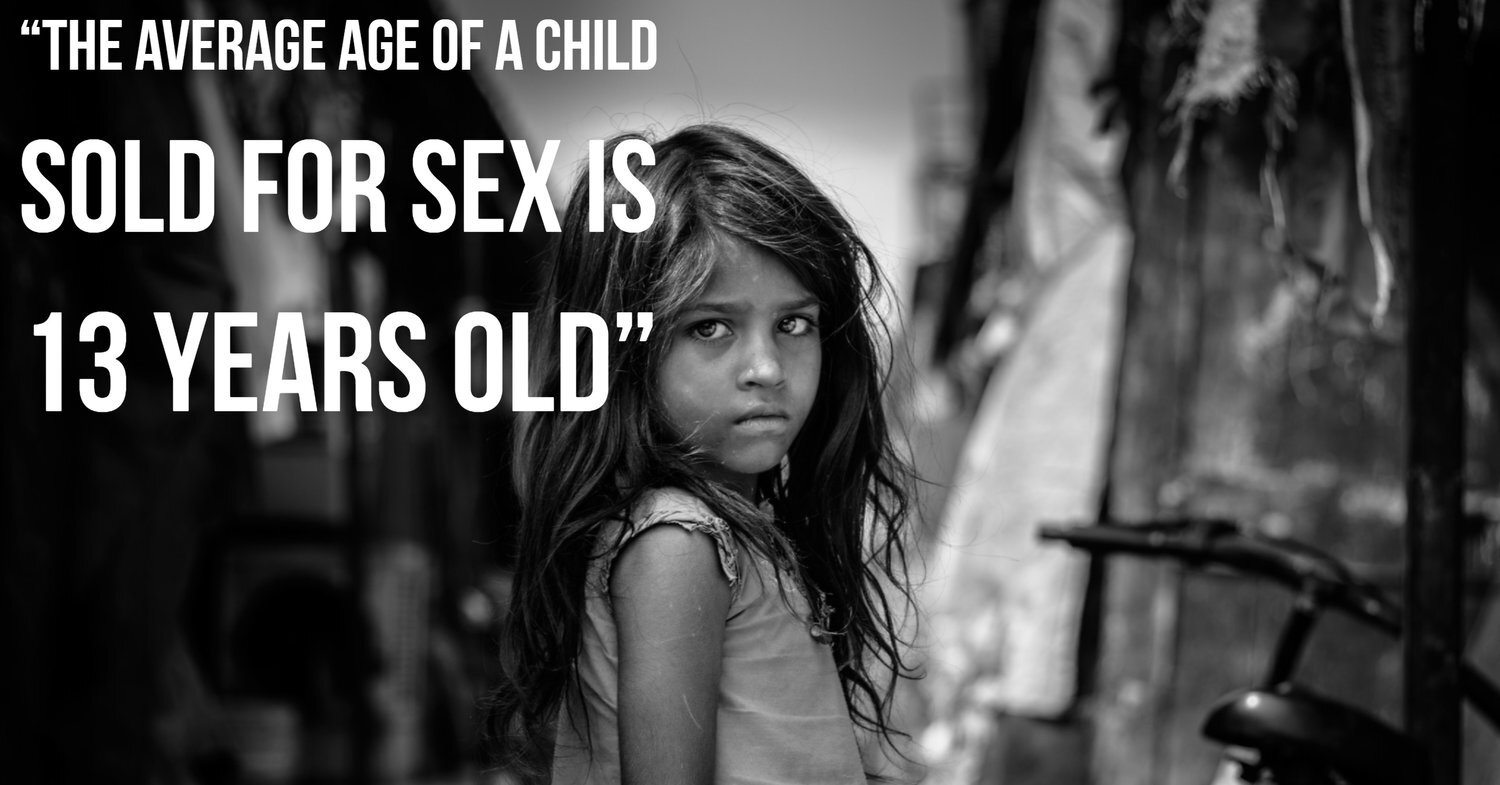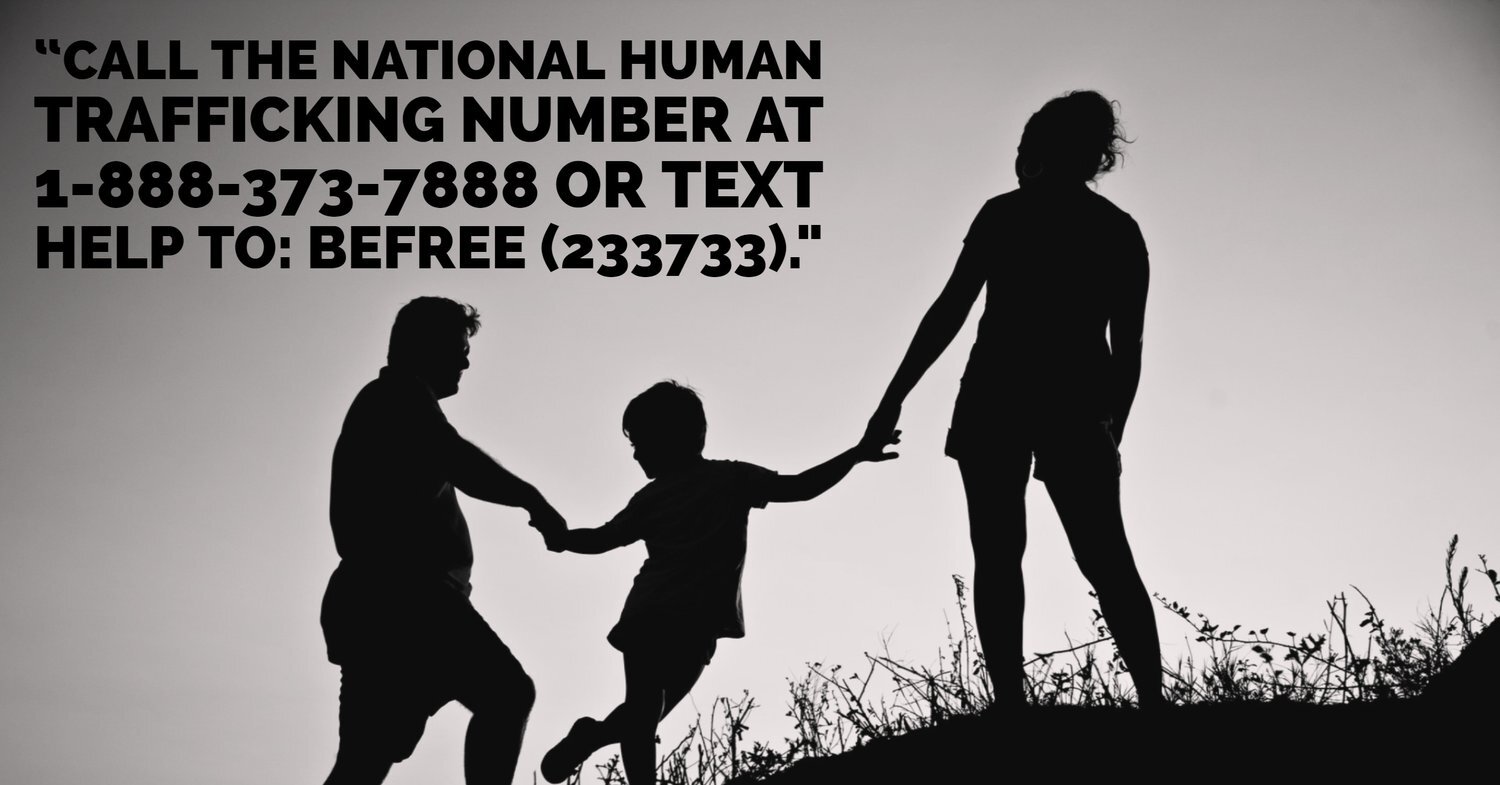Understanding Human Trafficking in Our Backyard
When Americans think of “sex trafficking” or “human trafficking” they often think of third world countries, impoverished countries, or anywhere but the good old U.S of A. However, America’s own backyard is where thousands are being trafficked daily.
To start let us define human trafficking; it is defined as “the recruitment, harboring, or obtaining of a person for labor services, through the use of force, fraud, or coercion for the purpose of subjection to involuntary servitude, peonage, debt bondage, or slavery” (Chancey, 2013). Human trafficking includes sex and/or labor trafficking. It is a blatant violation of human rights and is modern day slavery. As all Americans know, the 13th Amendment made slavery illegal, yet it is still occurring in horrific amounts right in front of our own eyes.
This is not just an overseas problem, it is a global epidemic. The FBI believes human trafficking to be the third largest criminal activity occurring in the world (Federal Bureau of Investigations, 2018). The United Nations estimates over 200 million victims are migrated across national borders annually (Crane & Moreno, 2011). Human trafficking is rampant in the United States with 14,000-15,000 individuals trafficked into the US annually (ACOG, 2011). This is a business with an estimated $150 billion annual revenue (Pinaki, 2015) and is second only to drug trafficking. Think about those numbers! How is this not an American problem?
Let’s assess some facts: Human trafficking puts an estimated 250,000 American teenagers at risk for sex trafficking every year (Chancey, 2013) and 400,000 American youth are being prostituted each year (Collins & Grace, 2009). The victims are 80% women and 50% are minors (Collins & Grace, 2009). Statistics report that the average age of a girl entering the commercial sex industry is between 11 and 14 and boys entering the commercial sex industry average age 11 to 13 (Kenny, 2015). These facts do not mean that men and boys are not being used for sex trafficking as well; more males are used for labor than for sex though. “The average age of a child sold for sex is 13 years old” (Human trafficking, 2018). Kenny (2015) states that 80-90% of children entering the commercial sex industry have experienced sexual assault as a child.
It’s indicated that on average victims are sold 10 to 15 times daily, totaling between 9,360 to 14,040 sex acts annually (Kenny, 2015). Within the U.S evidence of trafficking reveals that 75% of victims are used for sexual exploitation and 25% are used for forced labor and servitude; children consist of 40% of this population (Pinaki, 2015). 12.3 million people in the world are living as victims of human trafficking (Isaac, Solak, & Giardino, 2011). Human trafficking is occurring in all 50 states, with 91 cities being the top hubs for this activity, and California is the top state for trafficking (Crane & Moreno, 2011).
These victims… these people… these survivors… they are your neighbors. They are the person next to you in the Emergency Department. They are walking across the street with you downtown. They are passing you by while you pump your gas or buy your hygiene products. We hear some of their stories unfolding on the news sporadically. We learned through social media of a young girl (a trafficking victim) on an airplane who was saved by a flight attendant. We are slowly seeing advertisements, such as commercials or billboard signs or hotline numbers posted in rest stop bathrooms on human trafficking. The question remains though do you know what a victim looks like? Do they even have a “look”? More importantly how can the untrained eye tell if something is going on and intervene, when even trained individuals overlook the red flags?!
Difficulty on distinguishing who is and who is not a victim falls on the mere fact that people do not involve themselves in others affairs, too many people do not believe this is an issue in America, there are too many untrained eyes, and victims do not always perceive themselves as victims. Victims see a risk of retaliation by the trafficker, they suffer a lack of knowledge of resources, cultural, social, and language barriers (ACOG, 2011). The key is for us, Americans, to learn what the “red flags” are and what to do about them.
For starters there are targeted groups for trafficking. Those target groups include individuals in high risk populations, such as runaways, disabled individuals, lesbian, gay, bisexual, and transgender individuals, those living in poverty, and those already associated with the criminal justice system (Kenny, 2015).
Some red flags include: a younger female with an older male, a person not free to leave or come and go as he/she wishes, is under 18 and providing commercial sex acts, works excessively long or unusual hours, has a pimp, is not allowed breaks or has severe restrictions at work, appears fearful/anxious/depressed/submissive, avoids eye contact, afraid of law enforcement, appears malnourished, shows signs of abuse, is not allowed to speak for themselves, has no personal possessions, not in control of their own money or identification, numerous inconsistencies in their story, and is unable to clarify where they live/stay (Recognize the Signs, 2018).
These are just a few red flags to be aware of. If any of the above is observed there are hotline numbers to call, such as the National human trafficking number at 1-888-373-7888 or texting HELP to: BeFree (233733).
Open your eyes and be on the lookout- the most common trafficking venues include online ads, hotel/motels, domestic servitudes (house cleaners), food services, fronts for brothels, sporting events (ex. the Super Bowl), and health/beauty sales (Prevalence of Human Trafficking in Pennsylvania, 2015). Allow me to bring this home for us Americans, in 2017 alone there were 26,557 suspected trafficking calls made to the National Hotline for trafficking, with 8,524 cases actually being reported (Hotline Statistics, 2018). Out of those reported cases 6,081 were sex trafficking victims and 7,067 of those victims were female (Hotline Statistics, 2018). Looking at cases reported and only those reported, California in 2017 had 1,305 cases, Texas 792, Florida 604, New York 333, Pennsylvania 199, Virginia 156, and Wisconsin 91- just to name a few (Hotline Statistics, 2018). These are only cases called in.
Think about the hundreds of thousands that do not get called in and the thousands of surviving victims going overlooked by us, the person walking/sitting next to them. Think about how this is someone’s daughter, mother, brother, son, cousin, and friend who just needs society’s help in saving them.
References
ACOG. (2011, September). Human trafficking. The American College of Obstetricians and Gynecologists: women's Health Care Physicians(507).
Chancey, L. (2013). Human trafficking for health care workers.
Collins, K., & Grace, A. (2009, August). Human trafficking and healthcare: modern-day slavery and its effects on the health of teens and children in the U.S. Standford University.
Crane, P. A., & Moreno, M. (2011). Human trafficking: what is the role of the health care provider? Journal of Applied Research on Children: Informing Policy for Children at Risk, 2(1), 1-27.
Federal Bureau of Investigations. (2018). Human Trafficking/Involuntary Servitude. Retrieved from FBI: what we investigate: https://www.fbi.gov/investigate/civil-rights/human-trafficking
Hotline Statistics. (2018). Retrieved from National Human Trafficking Hotline : https://humantraffickinghotline.org/states
Human trafficking. (2018). Retrieved from Tennessee Bureau of Investigation: https://www.tn.gov/tbi/crime-issues/crime-issues/human-trafficking.html
Isaac, R., Solak, J., & Giardino, A. (2011). Health care providers' training needs related to human trafficking: maximizing the opportunity to effectively screen and intervene. Journal of Applied Research on Children: Informing Policy for Children at Risk, 2(1), 1-30.
Kenny, J. (2015). Identifying human trafficking victims in a clinical setting. 1-24.
Pinaki, M. (2015). Recognizing human trafficking victims in the emergency department. Retrieved from AHC Media : https://www.ahcmedia.com/articles/134799-recognizing-human-trafficking-victims-in-the-emergency-department
Prevalence of Human Trafficking in Pennsylvania. (2015). Retrieved from Nationalities Service Center: https://nscphila.org/sites/default/files/attachments/Prevalence%20of%20Human%20Trafficking%20in%20Pennsylvania_0.pdf
Recognize the Signs. (2018). Retrieved from Polaris: http://polarisproject.org/human-trafficking/recognize-signs



